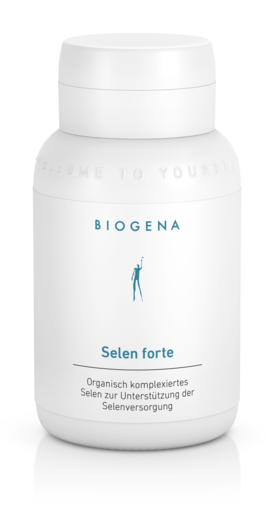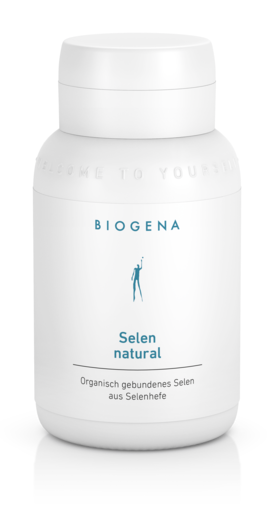Selenium as a nutritional supplement
Selenium supplements are an easy way to supply the body with supplemental selenium. To choose a suitable selenium supplement for you, ideally you should have your selenium levels checked beforehand.
Dosage forms: selenium capsules, tablets, drops, powders and many more.
If you want to increase your selenium intake with the aid of a selenium supplement, there are a number of different formats available. The most common forms include selenium capsules, tablets and drops.
Capsule products, which are manufactured to the same standards as BIOGENA products, do not require the unnecessary additives that tablets do (e.g. colourings, binding and anti-caking agents or synthetic coatings). This somewhat more complex and expensive production method is compensated for by excellent tolerability and high bioavailability.
Selenium drops can be placed on the tongue, especially for people who do not like to swallow capsules or may even struggle with swallowing. To choose a premium product, however, you should always take a careful look at the list of ingredients and choose according to the ‘less is more’ principle.
Is selenium vegan?
Vegan selenium raw ingredients are generally used in food supplements. It makes no difference whether you take an organic selenium supplement or an inorganic selenium product.
Natural selenium
For people who prefer to get selenium naturally, food supplements with organic selenium compounds are just the thing. In natural foods, selenium is usually present in the form of readily bioavailable, organically-bound selenium. Plant-based foods primarily contain selenomethionine, while animal products mainly contain selenocysteine. Premium products supply the organically-bound selenium in the form of selenium yeast, obtained by cultivating yeast in a nutrient medium with selenium.









